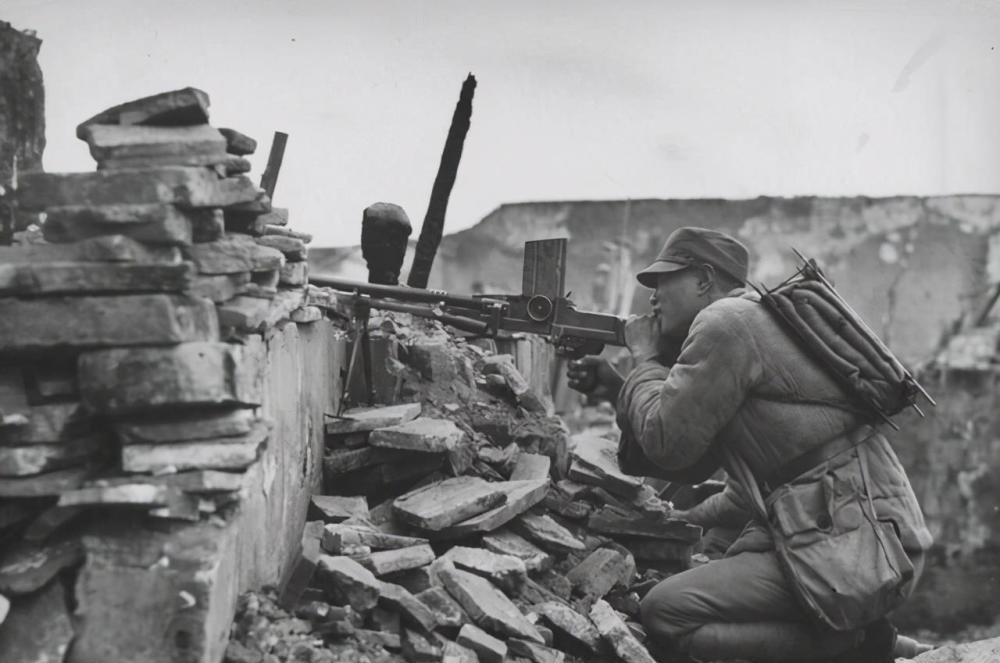During the War of Resistance Against Japanese Aggression, both the troops of our Communist Party and the army of the Kuomintang waged a vigorous struggle to drive out the aggressors.
During the War of Resistance Against Japanese Aggression, the army that had captured the largest city in the occupied area was the Kuomintang's Jin Sui Army, and since this was the case, were they the most effective of the Kuomintang army?

The Jin Sui Army, also known as the Jin Army and the Yan Army, was a military force in Shanxi, Suiyuan, and North China during the Republic of China. Its predecessor was the Shanxi New Army at the end of the Qing Dynasty. In 1927, it was renamed the Northern Army of the National Revolutionary Army, and in 1928 it was renamed the Third Army of the National Revolutionary Army.
In December 1939, Fu Zuoyi led his troops to attack Baotou, annihilating hundreds of Japanese puppet troops and capturing the "big city" of Baotou. Of course, he gave up immediately after that. In 1940, the Japanese army launched a retaliatory attack and occupied the county seat of Wuyuan Inuyasha. Later, it was recaptured by Fu Zuoyi's army and annihilated a Japanese army.
In December 1939, the Japanese army attacked Changsha to the south. In order to contain and attract the Japanese army in north China, Fu Zuoyi decided to take the initiative to attack. On the evening of the 19th, with the 35th Army as the main force and the 7th Cavalry Division as a supplement, he launched a surprise attack on Baotou, and after completing the task of containment, he withdrew to the hetao defensive area. It took half a month and a thousand miles back and forth. Annihilated two enemy regiments in Baotou and 300 to 400 enemy reinforcements, and destroyed four enemy tanks and more than sixty vehicles.
In the spring of 1940, the Japanese army dispatched more than 30,000 people and more than 1,000 vehicles to attack the Hetao area, and occupied Wuyuan on February 3. After Fu Zuoyi waited until the enemy's main force retreated eastward, Fu recaptured Wuyuan on March 22, killing more than 300 Japanese policemen and annihilating two divisions of the puppet army. Historically, it is known as the Great Victory of the Five Plains, which set a precedent for the Kuomintang to recover lost land. Before the Battle of Xuefeng Mountain and a series of glorious achievements in chasing the Japanese army, the most successful battle record of the Nationalist army was the one fought by the Jin Sui Army.
Of course, the Jin Sui Army is a big idea. All factions of Yan Xishan were regarded as jin sui troops. Although Fu Zuoyi's troops are very good at fighting, other units can be said to be dragging their hind legs. In other words, Suijun performed well. The Jin army led by Yan Xishan himself was a model from defeat to failure, with no record worthy of boasting. At most, it can only be said that the Battle of Xinkou was the most expensive battle of the Anti-Japanese War and the most generous battle in the War of Resistance?
In the entire period from the War of Resistance Against Japanese Aggression to the War of Liberation, the most famous and worst action of Yan Xishan's Jin army was probably to kill the revolutionary hero Liu Hulan at Lüliang Mountain. The rest of the battles were nothing more than being hoisted up by the Japanese army or the People's Liberation Army hanging up to fight, and the combat effectiveness was quite weak.
In July 1937, the War of Resistance Against Japanese Aggression broke out in full swing, and Yan Xishan was appointed commander-in-chief of the Second Theater of Operations. In November, the Japanese invaded Taiyuan. Yan Xishan shifted the main force of the Jin army to Linfen and other places, and Fu Zuoyi remained in Taiyuan. In December 1937, Fu Zuoyi was promoted to commander-in-chief of the North Road Army in the Second Theater of Operations and commander of the Thirty-fifth Army. Since then, the Jin Sui army has split.
After the defeat at the Battle of Nakajōzan in May 1941, the Jin army huddled in western Jin until the Japanese surrendered.